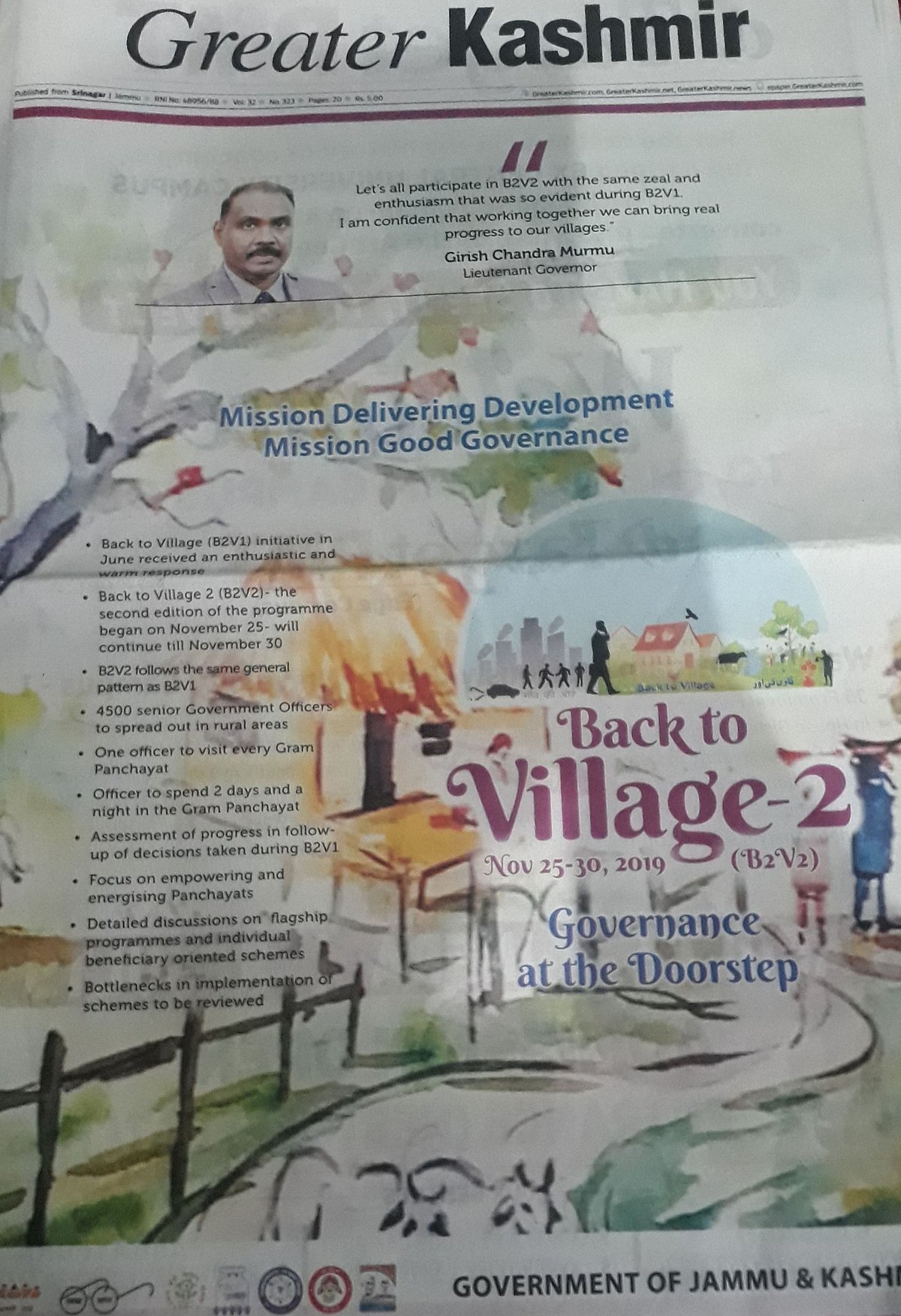Second edition of J&K government’s ‘Back to Village’ fails to impress the citizenry
People feel the government’s real intention was not to address their grievances as it claimed, but to try and portray that ‘normalcy’ had returned to the troubled region

Newspapers in the Valley for the past many days have been plastered with government advertisements announcing the second edition of the state government’s "Back to Village" programme (B2V2).
Under this 5-day-long programme, rolled out on November 25, government officials are supposed to visit the villages to assess the progress of the decisions taken up during Back to Village 1 (B2V1) and spend two days and a night in the Gram Panchayats.
In June this year, the Governor’s administration had launched the first edition of the ‘Back to Village’ programme, during which government officials visited the Gram Panchayats across the state to address the grievances of people.

More than 4 months down the line, the people, however, say that the majority of the issues they had brought to the notice of the officials remain unaddressed.
Many residents in north Kashmir's Bandipora district say that the programme came a cropper as none of their grievances was addressed.
“The roads in our village are rather battered and the entire area has been reeling under severe shortage of safe drinking. Both these issues were taken up with the officials during the B2V1 programme but to no avail,” says Tariq Ahmad, Sarpanch of Maqdamyari village, a quaint village some 25 km from Bandipora town.
Abdul Basit, a resident of Imamshab village of south Kashmir's Shopian district says that the officials during their visit took note of many issues their village has been facing for several years, but nothing had happened thus far. He says the government failed to provide their village with even a few electric poles. “It was an exercise in futility,” he adds.
Incidentally, Prime Minister Narendra Modi had during his monthly radio broadcast in July this year made a two-minute-long mention of the programme after, the PM said, he received a message from a local resident of the area hailing the programme.
Low participation
For a host of reasons, the people this time around are largely staying clear of the programme. While the non-fulfilment of promises made during the previous edition of the programme is one of the reasons, the abrogation of the special status of Jammu and Kashmir and its division into two union territories remained a dominant factor.
“This government has taken away all we already had. We don't trust it anymore. It has nothing to offer us,” said Javed Ahmad, a resident of Anantnag. Javed says that there is anger among the people and the government should first address the same.
In Pulwama's Machpona village, only a few local men showed up at a government school on Monday where the programme was held.
“They did not deliver on the promises they made previously. How do you expect good participation of residents in such programmes,” said Zeeshan Ahmad, a local resident?
On Wednesday, militants mounted an attack during the programme, killing a Sarpanch associated with the Congress Party and a government official in Hakoora village of Anantnag district. The attack has further stymied the programme.
Many in the Valley believe that the motive behind the move is to create an impression that the things are hunky-dory in Kashmir. “The real intention of the government is not to give an ear to the grievances of people at the grassroots as they claim, but to try and portray that ‘normalcy’ has returned here,” said Mohammad Amin Bhat, a resident of Srinagar.
Bhat said that the government had thrown a red herring into the growing debate over the current unrest in Kashmir.
A District Panchayat Officer from northern Kashmir, who declined to be quoted in this report, conceded that this time they were not really getting an overwhelming response from the people. However, he added that the long drawn out lockdown in Kashmir and lack of sufficient funds were the key reasons that hampered various developmental projects in different areas across the Valley.
Follow us on: Facebook, Twitter, Google News, Instagram
Join our official telegram channel (@nationalherald) and stay updated with the latest headlines
